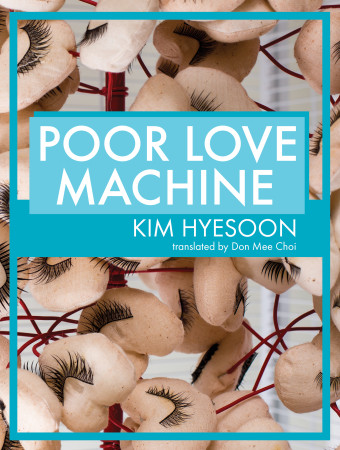 Poor Love Machine by Kim Hyesoon
Poor Love Machine by Kim Hyesoon
Kim Hyesoon has long been held in high regard as a master of Korean letters. Originally published in Seoul in 1997, Poor Love Machine was chosen for the Kim Su-yŏng Poetry Prize, arguably South Korea’s most coveted accolade. Recently, and with the assistance of another Korean literary luminary in Don Mee Choi, her works have been graciously translated into English. Choi’s recent translation of Hyesoon comes in the form of the poetry collection Poor Love Machine, an eloquent meditation on corporeal misery, and the crushing spaces the body inhabits.
The opening piece in the collection titled “Rat,” is packed with the overarching thematic qualities found in the collection, and is perhaps the most telling and intimate insight into the mind of Hyesoon and the temporal space her subjects reside.
Do people know how much it hurts the darkness when you turn the light on in the middle of the night?
“Rat” meditates on the speaker’s desire for a certain darkness to maintain within their life – specifically the essence of darkness that defines their body. Light is seen as something foreign and destructive to the relative solitude and solace that is found within the speaker’s bodily darkness. In one such attack the light places on the darkness, the speaker equates the experience eloquently to that of a pinned down beatle: “When the light is switched on inside my darkness, I buzz like a beetle pinned down, bzzz, bzzz, bzzz, bzzz, and shake my head wildly, my mandibles holding onto a black string.” The body is not only a source of misery with Hyesoon, but it has also come to represent a symbol of the grotesque.
Choi’s translation of Poor Love Machine is worthy of its own critical review. The English translation of Poor Love Machine can feel opaque – with certain passages being thorny and vaguely impenetrable. This can be explained quite easily by Choi’s careful translation, and devotion to not compromising the inherent playfulness of Hyesoon’s Korean. It would have been easy for Choi to have bypassed the idiosyncratic nature of Hyesoon’s language, and opted for a more streamlined and accessible English text, but she decided to grace us with a wonderful translation that is combative, stunning, and at times challenging.
In the semi-titular poem “Poor Love Machines Trapped in Rain,” the theme of the human body being represented as something that is prone to being destroyed or “crushed” is on display:
The crushed body gets erased / then is crushed again
In Kim Hyesoon’s world the body is a consistent source of misery, and of cosmic constraint and disillusionment. In the piece titled “Driving in the Downpour,” Hyesoon lamentably asks, “why have I lived so long in the same body[?]” There is a strong thread of dissatisfaction with the body in this collection that really propels it forward at a manic, nervous pace. This feeling of neurosis bleeds from the page in pieces like “Sunstroke,” where the stylistic choice to use repetition only adds to its feverish nature:
Get submerged / get submerged in the blazing sun / get submerged in the rippling blazing sun
“Sunstroke” relies heavily on a vaguely Steinian poetic elliptical style. This becomes most apparent in the following three lines:
Hear something as I get submerged in the rippling blazing sun / Hear something then don’t hear then hear again / as I get submerged in the rippling blazing sun
This puts an emphasis once more on the body and the space that it inhabits. “Sunstroke” portrays the sun as a cleansing, almost spiritual entity, where the body is a source of pain and must be purged. Unlike collection opener “Rat,” where light was seen as something intrusive and destructive, Hyesoon attributes the sun to be a kind of corporeal reprieve. The speaker relates the sound of being submerged in the sun to that of a “voice I have wanted to hear for a thousand years.” The longing and insatiable desire for the body to enter a kind of cosmic oblivion free from the violence of the human body is at the heart of “Sunstroke” and Poor Love Machine.
It would be remiss to not highlight the cultural context for this collection’s release in Korea during the 1990’s. It’s release and acclaim represented a trailblazing moment for female Korean writers, and has long been seen as a crucial Korean feminist tome. The concrete misery conveyed by Hyesoon in this collection, is the collective misery of a turbulent Korea during the 1990’s, a country that witnessed vast cultural and social upheaval. Nearly 20 years later, and now with a wonderful English translation, this collection has the promise of being just as important and vital to the world of English letters. 20 years on, in times of great global uncertainty and misery, Poor Love Machine couldn’t feel more relevant.
Poor Love Machine is available now through Action Books.



